Quick Overview – Best GPUs for Gaming at a Glance
1. Nvidia GeForce RTX 5090 – Best High-End GPU for 4K Gaming
Nivida GeForce RTX 5090 is rated as one of the best GPUs for gaming at higher resolutions. It has 32GB GDDR7 VRAM which is more than enough for 4K/8K gaming. It delivers a smooth gameplay with high frame rates. It also consists of 21.7K CUDA cores and new DLSS 4 & Multi Frame Generation, featuring top performance with AI features.
On the other side of these features, it needs a 575W PSU and cooling to stay balanced. However, even with a bigger piece tag ($1999), it’s still not a very big jump over the previous RTX 4090. If you want maxed out 4k/8k gaming, heavy editing with thousands of elements, 3D work, or AI features, it’s for you. Many Gamers are satisfied with the value of RTX 5080 or AMD’s high-end cards too with a less price.

2. Nvidia GeForce RTX 4080 – Best GPU for 4K Gaming (Alternative to 5090)
Nvidia GeForce RTX 4080 is also on the list of the best GPU for high-level gaming at 4K. It has 16GB GDDR6X VRAM which is plenty for 4K gaming and other creative work without any major bottlenecks. With 9,728 CUDA cores and DLSS 3 & Ray Tracing, it shows excellent performance for maxed out settings and AI boosted frame rates.
It’s great for gamers who want premium features like DLSS, Ray Tracing, and Multi-Display setups without paying more for RTX 5090. It wants 320W PSU, which is easier than 5090.However, its price is still expensive ($1,199–$1,399), and is not as powerful as 5090. If you’re a serious 4K gamer who wants the features of 5090 without paying that price, it’s best. But, for gamers with gameplay at1440p, you may look for a mid-range card for better value.
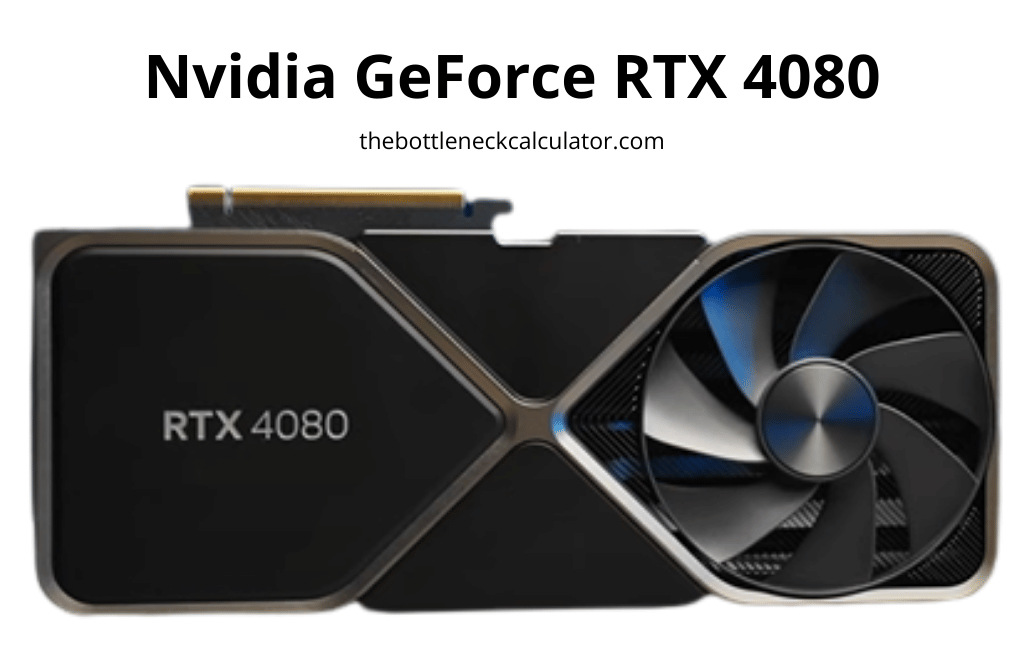
3. AMD Radeon RX 7900 XT – Best 4K GPU on a budget for Gaming
AMD Radeon RX 7900 XT is also a great option for gamers who want near to top-tier performance (4K) but don’t want to spend that much on a Nvidia RTX 4080/5090. It has 20GB GDDR6 VRAM and is built on AMD’s RDNA 4 architecture which is perfect for 4k gaming and heavy textures without hiccups. It has 5,376 Stream Processors and Ray Tracing for creative tasks.
It just needs 300W power, which is way easier than top-tier Nvidia cards. It’s ray tracing performance is not as good as Nvidia’s high-end GPUs as some games may see lower maxed out settings as compared to RTX 4080/5090. Overall, it has a great balance between performance and price ($650–899), making it the best 4K GPU for gaming on a budget.

4. AMD Radeon RX 9070 XT – Best Value GPU for 1440p/4K Gaming Performance
Another GPU rated on the Best GPUs list is AMD Radeon RX 9070 XT. With 16GB GDDR6 VRAM, it becomes good value GPU for 1440p or a decent 4K gaming experience. It has an excellent balance of price ($599) and performance, making it ideal for gamers wanting high FPS at 1440p, or an entry-level gameplay at 4K too.
It has RDNA 4 architecture too for better efficiency and rasterization than last gen. In comparison to the Nvidia GeForce RTX 5090, it only needs 300W PSU which is moderate in size. However, in demanding titles, its ray tracing still is behind the Nivida’s GPU. Overall, its a sweet spot for gamers who don’t priortize ray tracing and need a decent to excellent gameplay.
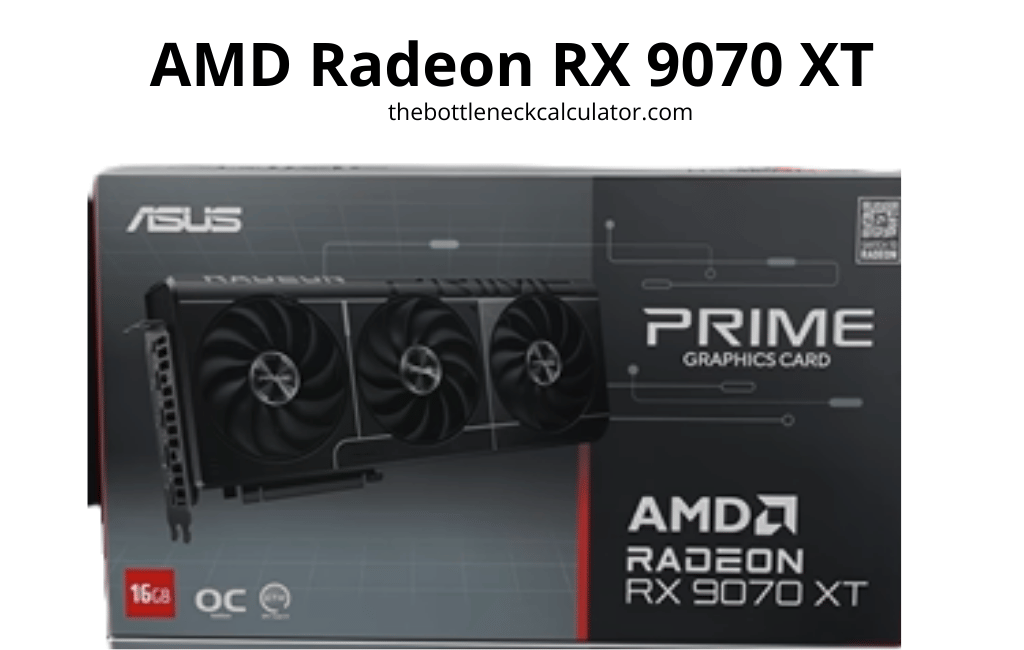
5. Nvidia GeForce RTX 5070 Ti – Best Mid-Range Gaming GPU for 1440p Gaming
Nvidia GeForce RTX 5070 Ti is the best mid-range GPU for gamers. It offers 12GB GDDR7 VRAM with higher bandwidth than GDDR6, and is future-proof for higher resolution textures. With 6,144 CUDA Cores and 48 RT Cores, it has strong raster and ray tracing. Although it runs comfortably in 650W PSU, it can also run moderate on 250W PSU.
It gives best performance in 1440p to 1800p, and entry level in 4K too. On the other side, its dependant on DLSS 4 for its biggest gains. Without AI upscaling, raw performance uplift from the 4070 is modest.It’s price is also a bit high($600-900) in comparison to the features it provides. It’s a great choice for gamers who want mid range gaming GPU for 1440p gaming with basic 4K exposure. For pure rasterization muscle, consider AMD’s RX 9070.

6. Nvidia GeForce RTX 4070 – Best 1440p Gaming GPU
Another GPU in the list is Nvidia GeForce RTX 4070. It supports 12GB GDDR6X VRAM which runs 1440p smoothly with some 4K games too. With 5,888 CUDA Cores and 46 RT Cores, it‘s strong for ray tracing at 1440p. It supports DLSS 3 Frame Generation and handles high refresh rates with ease.
It used 200W power and runs comfortably on a modest PSU. While, its 12GB VRAM may age poorly in upcoming AAA games at higher settings. Cards like RX 7800 XT offer more memory and similar raster performance for the same ($600) or lower price. If you are aiming to play at low to moderate fps with DLSS enabled, its a great 1440p gaming GPU for you. However AMD’s higher VRAM options are better for long-term 4K use.
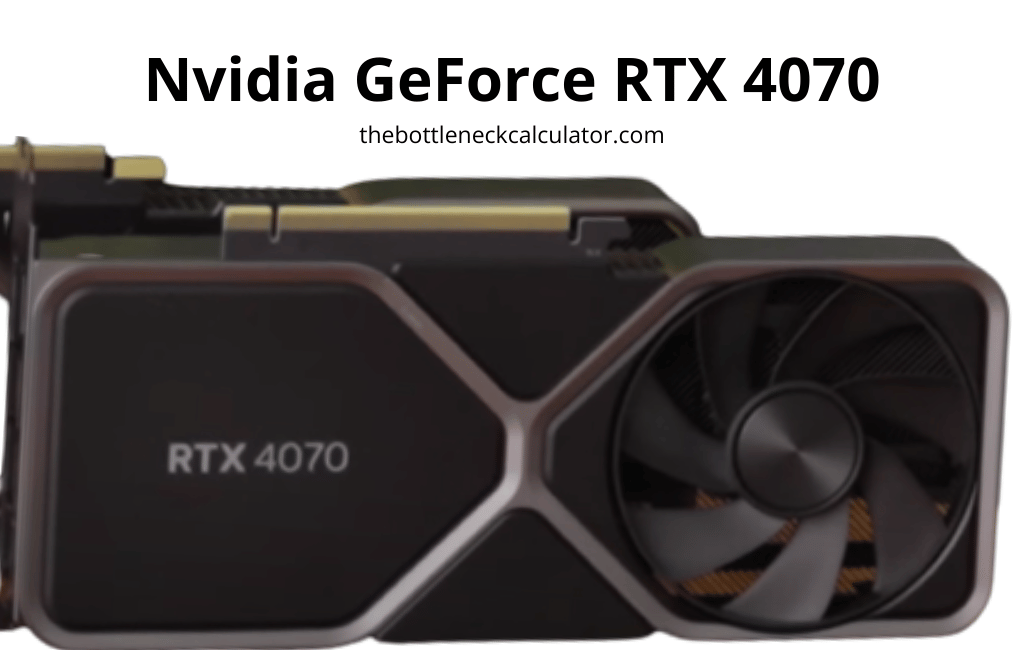
7. Nvidia GeForce RTX 4060 Ti – Best Gaming GPU for 1080p
Nvidia GeForce RTX 4060 Ti is also a good option for mid-range gaming at a moderate price($439-499). It has 8 GB (or 16 GB) GDDR6 VRAM which runs 1080p and some 1440p games comfortably. It has 4,352 CUDA Cores and 34 RT Cores which is roughly 115% of RTX 3060 Ti raster throughput, with DLSS boosting ray tracing.
It’s one of the lowest power consumptor among mid-rang cards as it only needs 160W TGP power. However, the 8GB version face some bottlenecks at higher settings. It’s performance is also not way better than the RTX 3060 unless you rely on DLSS. It’s a good option if you want modern, power-friendly gaming GPU at 1080p or lighter 1440p for everyday gaming.

8. AMD Radeon RX 7800 XT – Best Budget GPU for 1080p/1440p Gaming under $500
AMD Radeon RX 7800 XT is the best budget GPU for 1080p/1440p gaming just in $500. It has solid memory capacity and bandwidth of 16 GB GDDR6 VRAM. It’s a solid pick for serious 1440p or budget-conscious 4K gamers. It has 3,840 Stream Processors and 60 Ray Accelerators to deliver strong raster performance, outperforming RTX 4070.
It’s a bit power-hungry compare to Nvidia rivals, using 263W power. Even tough its ray tracing performance still lags behind Nvidia solutions, it’s still an excellent value if you prioritize raw gaming performance. Overall, if you want serious performance in non-ray-traced games at 1440p, it’s a perfect fit. For more reliability on ray tracing, NVIDIA alternatives including RX 7800 XT may be a better fit.

9. AMD Radeon RX 6950 XT – Best GPU for 1440p/4K Gaming (Previous-Gen Value)
AMD Radeon RX 6950 XT is another best option in our list. Its 16GB GDDR6 VRAM is enough for 1440p and 4K gaming with high textures. It has 5,120 Stream Processors and 80 Ray Accelerators, contributing to excellent raster performance, trading blows with RTX 3090 in many games.
It needs 335W power to run comfortably. It’s a great choice for raster gaming performance. Its Ray tracing is weaker than Nvidia’s, and it runs hot with high power demands. It also lacks newer AI features like DLSS 3. However, its a solid GPU for 1440p/4K gaming if found under $500-600.
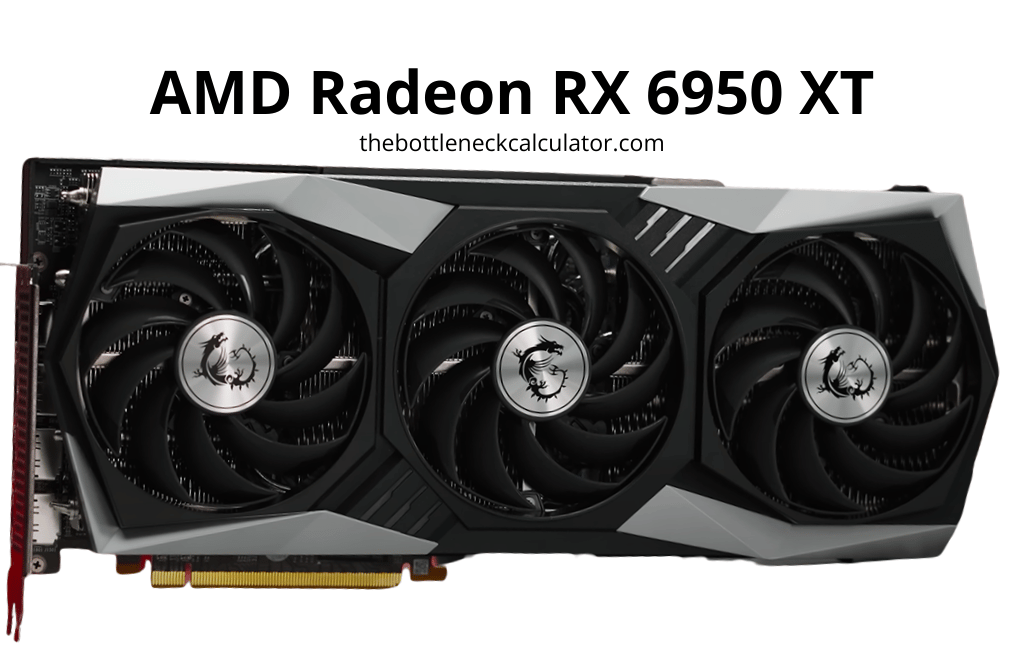
10. Intel Arc B580 – Best Budget/Entry-Level GPU for 1080p Gaming
The last GPU on our list is the Intel Arc B580. It’s easily one of the best entry level and budget-friendly GPUs for 1080p gaming for around $250. With 12 GB GDDR6 VRAM, its great for high-resolution textures in 1080p and 1440p gaming. Thanks to its higher VRAM and efficient upscaling with Intel’s XeSS, it often outperforms RTX 4060 in gaming with ray tracing off.
It needs just 190W TDP power. Overall, its an excellent pick for budget-focus gamers who mainly play at 1080p or 1440p. Just be sure to check compatibility and update drivers regularly. If you lean into creative software or prioritise ray tracing, NVIDIA or AMD alternatives may serve better.
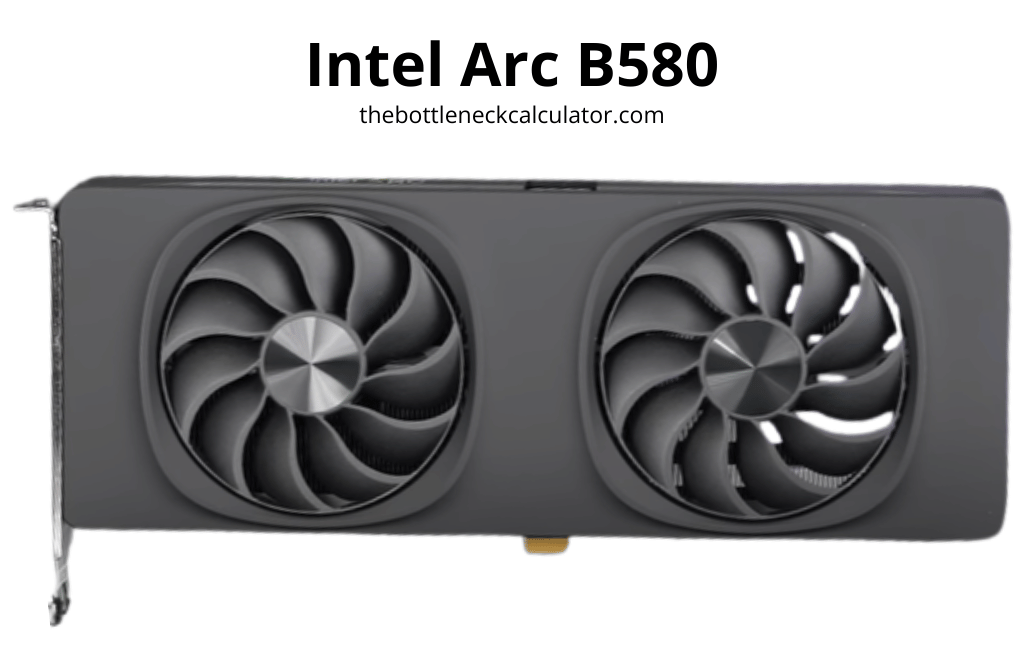
Best Graphics Cards for Gaming (Detailed Reviews)
1. Nvidia GeForce RTX 5090
Specifications: Architecture: Blackwell; 32 GB GDDR7, 512-bit bus, 21,760 CUDA cores, 575 W TDP; launch MSRP ~$1,999
Pros:
1. Top-of-the-line performance. 25–35% faster than RTX 4090 for gamers needing extreme FPS.
2. Packed with AI-driven features including DLSS 4 (Multi-Frame Generation), Reflex 2, Neural Shaders, making it ideal for future gaming and creative workloads.
Cons:
1. Extremely expensive. The average price is around $3,900–4,100.
2. Very power consuming (575W). It requires a heavy PSU.
3. Mixed Reviews. RTX 4090 being equally good at less price.
Best For: Gaming enthusiasts who want best GPU for 4K gaming with AI features without any cost concerns.
2. Nvidia GeForce RTX 4080
Specifications: Ada Lovelace architecture; 16 GB GDDR6X, 320 bit, ~9,728 CUDA cores, ~320 W TDP
Pros:
1. Excellent and higher raster and ray tracing performance than older flagships at 4K.
2. Good balance of VRAM, power, and price for high-resolution gaming.
Cons:
1. Still pricey and close in performance to RTX 4090, which is cheaper.
2. Mixed opinions on if the 16GB VRAM is actually enough for future AAA tiles at ultra settings.
Best For: Gamers wanting GPU for strong 4K gaming performance with efficient power use but don’t need the absolute highest tier (5090/4090).
3. AMD Radeon RX 7900 XT
Specifications: RDNA 3; 20 GB GDDR6, 320-bit, ~84 Compute Units (~5376 Stream Processors), ~300 W board power.
Pros:
1. Excellent 4K raster performance with a generous 20 GB VRAM.
2. More cost-effective than Nvidia’s high-end cards.
Cons:
1. Ray tracing lags behind Nvidia’s RTX series.
2. Reference models had reports of high idle power and thermal spots.
Best For: Gamers wanting GPU for 4K gaming with lots of VRAM and excellent raster performance in reasonable cost.
4. AMD Radeon RX 9070 XT
Specifications: RDNA RX 9000 series, 16 GB GDDR6, 256-bit, 64 Compute Units (~4,096 SPs), ~304 W TDP; MSRP around $599
Pros:
1. Strong native raster and ray tracing at 1440p/4k balance.
2. Affordable in comparison to Nvidia’s mid-upper tier.
Cons:
1. Supply can be limited, which can raise street prices.
2. Ray tracing still generally less than Nvidia cards.
Best For: Mainstream gamers looking for good GPU with 1440p or light 4K with ray tracing and value at an affordable cost.
5. Nvidia GeForce RTX 5070 Ti
Specifications: Blackwell; 16 GB GDDR7, 8960 CUDA cores, 300 W TGP, MSRP ~$749
Pros:
1. Excellent performance with top AI features like DLSS 4 and Reflex 2.
2. Great upgrade over previous generations in both raster and RT.
Cons:
1. Higher price compared to AMD alternatives with less performance.
Best For: Gamers seeking a mid/high-end GPU 1440p gaming experience with cutting-edge features.
6. Nvidia GeForce RTX 4070
Specifications: Ada Lovelace; 12 GB GDDR6X, 192-bit bus, ~5,888 CUDA cores, ~200 W TDP, MSRP ~$549
Pros:
1. Excellent performance in 1440p and can handle even 4K with DLSS.
2. Very power efficient (200W).
3. DLSS 3 Frame Generation support extends longevity.
Cons:
1. Only 12GB VRAM which can limit ultra 4K textures in some newer titles.
2. Performance is weaker compared to AMD’s RX 7800 XT.
Best For: Gamers focused on best GPU for 1440p gaming with high frame rates, or 4K with upscaling.
7. Nvidia GeForce RTX 4060 Ti
Specifications: Ada Lovelace; 8 GB or 16 GB GDDR6, 128-bit bus, ~4,352 CUDA cores, ~160W TDP,MSRP ~$399-449
Pros:
1. Very efficient, runs cool and quiet.
2. DLSS 3 support makes 1080p/1440p games smooth.
Cons:
1. Narrow 128-bit bus hurts raw performance, especially at higher resolutions.
2. Performance is weaker compared to AMD’s RX 7800 XT.
Best For: People needing GPU at 1080p and mid-range 1440p for gaming while prioritizing efficiency and Nvidia features.
8. AMD Radeon RX 7800 XT
Specifications: RDNA 3; 16 GB GDDR6, 256-bit bus, ~3,840 Stream Processors, ~263W TDP, MSRP ~$499
Pros:
1. Excellent 1440p and solid 4K performance for the price.
2. 16GB VRAM ensures good future-proofing.
3. Better price & performance than Nvidia RTX 4070.
Cons:
1. Ray tracing weaker than Nvidia.
2. FSR upscaling less polished than DLSS.
Best For: Gamers who want GPUs for maxed-out 1440p or budget 4K with plenty of VRAM.
9. AMD Radeon RX 6950 XT
Specifications: RDNA 2; 16 GB GDDR6, 256-bit bus, ~5,120 Stream Processors, ~335W TDP, MSRP ~$500-600
Pros:
1. High raw raster performance.
2. Great value on the used market.
3. Plenty of VRAM for 1440p and 4K gaming.
Cons:
1. High power draw and runs hot.
2. Ray tracing far behind Nvidia’s GPUs.
3. No DLSS support.
Best For: Gamers chasing GPU for gaming at 1440p or traditional 4K (non-RT).
10. Intel Arc B580
Specifications: Battlemage architecture (Intel’s 2nd gen GPUs), ~16GB GDDR6X, mid-range performance tier, ~200–225W TDP, 2025, not yet widely available.
Pros:
1. Improved drivers over Arc A770 generation.
2. Likely competitively priced to undercut Nvidia/AMD midrange.
Cons:
1. Still unproven in long-term stability.
2. Limited availability and weaker software ecosystem.
Best For: Budget-conscious gamers willing to try GPU in budget by Intel’s new ecosystem if priced aggressively.
Best GPUs by Resolution & Budget
Best GPU for 1080p Gaming
The best graphic card for gaming in 1080p is most likely Nvidia GeForce RTX 4060 Ti. It’s efficient, quiet, and handles 1090p ultra easily with DLSS 3 for smoother gameplay. The features make it a best mix of performance and future features under $400.
Best GPU for 1440p Gaming
The best graphic card for 1440 gaming is AMD Radeon RX 7800 XT. With 16GB VRAM, it becomes a strong long-term choice even outperforming Nvidia’s RTX 4070 in raw value while staying under $500.
Best GPU for 4K Ultra Gaming
The best graphic card for 4K ultra gaming is Nvidia GeForce RTX 4080. It delivers excellent 4K performance with ray tracing and DLSS 3.It’s also more affordable than the flagship 5090, while still running modern games at ultra settings.
Best Budget CPU (Under $300)
The best budget graphics card under $300 is Intel Arc B580. With solid gameplay at 1080p/1440p performance at a competitive price, it’s a good point for budget gamers in 2025.
Best Midrange GPU ($400–$700)
The best midrange graphics card under $400-700 is AMD Radeon RX 7900 XT. It’s very powerful among the midrange cards, offering near 4080 performance for a less price. It’s excellent for strong 1440p/4k without overspending.
Best High-End GPU ($800+)
The best high-end graphics card with in more than $800 is Nvidia GeForce RTX 5090. It can be referred to as the top dog of 2025. With 4k with ray tracing and AI features, it’s best for enthusiasts demanding maximum performance.
Factors to Consider When Choosing a GPU
Knowing the factors to consider when choosing a GPU is very important. It avoids you wasting your time and money on GPUs not suitable for you.
Performance Benchmarks (FPS, gaming tests)
The first thing you need to consider before buying a CPU is performance benchmarks. FPS is a measure to see how smoothly and quickly graphics are loaded. 60 FPS is smooth, while 120+ FPS is ideal for competitive play.
Apart from it, other tests including bottleneck test should also be done to ensure your GPU’s compatibility with the rest of the system and your purpose. Some GPUs excel in raw performance, but others perform better with ray tracing or upscaling (DLSS/FSR).
VRAM & Memory Considerations
VRAM is a dedicated memory on your GPU for storing image data used bythe GPU. More VRAM allows for smooth gameplay and better long-term use, especially as games get heavier. For 1080p, 4G VRAM is enough, while 6-8GB VRAM is enough for 1440p. Although for 4k, you’d need 10-12GB VRAM or even higher.
Bandwidth (memory bus size + speed) also affects how fast that memory can be used. Better VRAM means better bandwidth and memory flow.
Power Consumption & Cooling
Another important factor to consider when buying a GPU is its power consumption and cooling. Before buying, check for the power supply it requires and see if you can fulfill it. If you do end up buying one with moderately larger demand for PSU, give proper cooling.
With large power supply, it’ll leave more heat than usual. Also check the case for your GPU. It should be comfortable for the GPU to fit in with space left for cooling.
Compatibility with Monitors (refresh rate, resolution)
Your GPU should also be compatible with your monitor to avoid any bottlenecks or slow performance. A High level GPU (such as Nvidia GeForce RTX 5090) work at 4K and require the monitor to be able to push these fps. However, a lighter GPU (such as AMD Radeon RX 7800 XT ) works at 1400p to 1880p. Hence, it needs a lighter GPU which can handle to produce these FPS.
Ray Tracing & DLSS / FSR support
In gaming, ray tracing gives more realistic lighting, but it’s demanding. DLSS (Nvidia) and FSR (AMD) upscale games to higher quality while keeping performance high. Nvidia leads in ray tracing and DLSS, AMD’s FSR works on almost all GPUs. Intel also has XeSS, but its support is limited.
If you play modern AAA games with ray tracing, Nvidia is stronger. If you want broad upscaling support, AMD’s FSR is flexible.
Software & Driver Support (Nvidia, AMD, Intel)
Drivers can make or break your gaming experience. That’s why up to date drivers are very important. Good performance GPUs (like Nvidia and AMD) constantly update their drivers to improve game experience and efficiency. Nvidia is praised for stable and updated drivers. While AMD has also improved alot, but has occasionally slower fixes.
Intel is still new and is improving too, but hasn’t reached the level of Nvidia and AMD. If you want a smooth experience with your GPU, don’t ignore software. Smooth drivers can be as important as raw GPU power.
How We Test Graphics Cards
Testing Methodology
Removing bottlenecks as much as possible is the first step for a successful test of any GPU. Once its done, we test high-resolution games including popular esports titles (CS2, Fortnite, Apex) and demanding AAA games (Cyberpunk 2077, Starfield, Alan Wake II). This fairly tells us which games performs best on which kind of GPU. Wherever possible, we also test on reference models (Nvidia Founders Edition, AMD reference) for comparison.
Benchmarks across 1080p, 1440p, and 4K
Benchmarks across 1080p, 1440p, and 4K are all tested. First, we let each GPU warm up with an initial run. After, we make sure each GPU is tested twice at every resolution. If the results differ by more than 0.5%, we run extra tests to have accuracy. We also cross check each result to catch any anomalies (e.g., if RTX 5070 Ti outperforms RTX 5080 in a test, we re-verify).
In the end, benchmarks show average FPS, 1% lows, and how GPU handles ray tracing and upscaling. With the help of these results, drivers and constantly updated to keep up with the increasing game demand.
Power, Thermals, Noise Levels
Apart from performance, we monitor each GPU’s power draw too to compare efficiency. Each GPU’s temperature is measured under load to see its power usage. However, cards with custom cooling may not give a very accurate result. Noise levels are also tested in a controlled environment to differ between multiple GPUs.
GPU Benchmarks & Performance Results
1080p Benchmarks (Medium & Ultra)
Most modern GPUs handle 1080p easily. It’s easy to render and most low to midrange GPUs too shine here. They often hit 100+FPS in esports and 60-120 FPS in AAA games. Modern and high end GPUs are not suitable for 1080p as they produce around 4K resolution and may go wasted. Unless you’re gaming at high refresh rates.
1440p Ultra Benchmarks
This is the sweet spot for performance vs visuals. Many midrange GPUs work really well here (such as RTX 4070, RX 7800 XT, and RTX 4070 Ti) by delivering 60-100 FPS in demanding titles. Entry level GPUs start to struggle here while high end GPUs push even higher, resulting in breakage of 120 FPS with DLSS/FSR enabled most of the times.
4K Ultra Benchmarks
4K is GPU intensive and mainly for enthusiasts. Only high performing GPUs like RTX 4080, RTX 5090, RX 7900 XT/XTX maintain smooth 60+ FPS performance in most AAA titles. For midrange users, they need to upscale to be able to run those games. Lower end GPUs fall short at 4K and aren’t recommended.
Power, Clocks, & Temperatures
In conclusion to all of the benchmarks tested, we can derive the following results. High end GPUs require strong PSU as they draw 350-400W. Moderate cards are more efficient, staying under 250W. For temperature, it generally stays between 65-80 C, but compact builds run hotter. Noise depends upon the design. Designs with triple-fans are quieter, while blower cards run louder.
GPU Buyer’s Guide 2025
Nvidia vs AMD vs Intel – Which to Choose?
You need to chose your GPU based on your requirements. Nvidia gives the best ray tracing performance, AMD delivers the strongest performance per dollar, while Intel delivers in very low budget. If you want cutting-endge features, go for Nvidia. For maximum value, buy AMD. And, Intel Arc if you’re on a budget.
How Much VRAM Do You Really Need?
VRAM (video memory) stores textures, assets, and data your GPU needs while gaming. The more demanding the resolution and settings, the more VRAM you’ll need.
- 1080p Gaming → 8GB is generally enough for most games, but sometimes newer AAA titles may need more than that at ultra settings.
- 1440p Gaming → 12GB is the new sweet spot. It prevents stuttering in big open-world games and keeps performance smooth with high textures.
- 4K Gaming → 16GB or more is ideal. High-resolution games with textures and ray tracing eat VRAM quickly. While less can cause frame drops or crashes in future titles.
- Professional/Creative Workloads → 20GB+ is useful for 3D rendering, video editing, and AI tasks where datasets are much larger.
However, buy according to the resolution you need. But, keep some headroom as VRAM demands climbing each year.
Do You Need a 12VHPWR Cable?
If you’re buying a new flagship or upper mid-range GPU from Ncidia, you’ll most likely need 12VHPWR Cable which is safer and cleaner than standard 8-pin connectors.However, always ensure the connectors fully click in before turning the power on to avoid overheating issues as reported in the past.
Should I Upgrade My GPU or CPU First?
You should upgrade your GPU if you encounter GPU bottleneck, while CPU for CPU bottleneck. You can fing out which part has the bottleneck through nay standard bottleneck calculator.
Generally, if games look choppy and lag in higher textures with GPU usage almost 100%, it’s most probably a GPU bottleneck. While, if games rum poorly in medium to lower graphics with almost full CPU usage, it might be a CPU bottleneck.
Case Size & Clearance Considerations
With powerful performance of modern GPUs, they are huge in size too. May high end models are over 300mm long and 3-4 slots thick. Always check your case’s GPU clearance, airflow, and cable space before buying. Small spaces may need small sized GPUs to work properly. A powerful GPU is useless if it can’t fix in your case.
Balancing GPU with Monitor & System
Your GPU should match the monitor and rest of the setup. For Example Pairing a 4K 144Hz display with an entry-level GPU will waste the monitor’s potential. Likewise, pairing a high-end GPU on a 1080p 60Hz screen will waste your GPU’s excellent performance. Balance with PSU is also required to avoid bottlenecks. Aim for a setup where all components work in sync.



